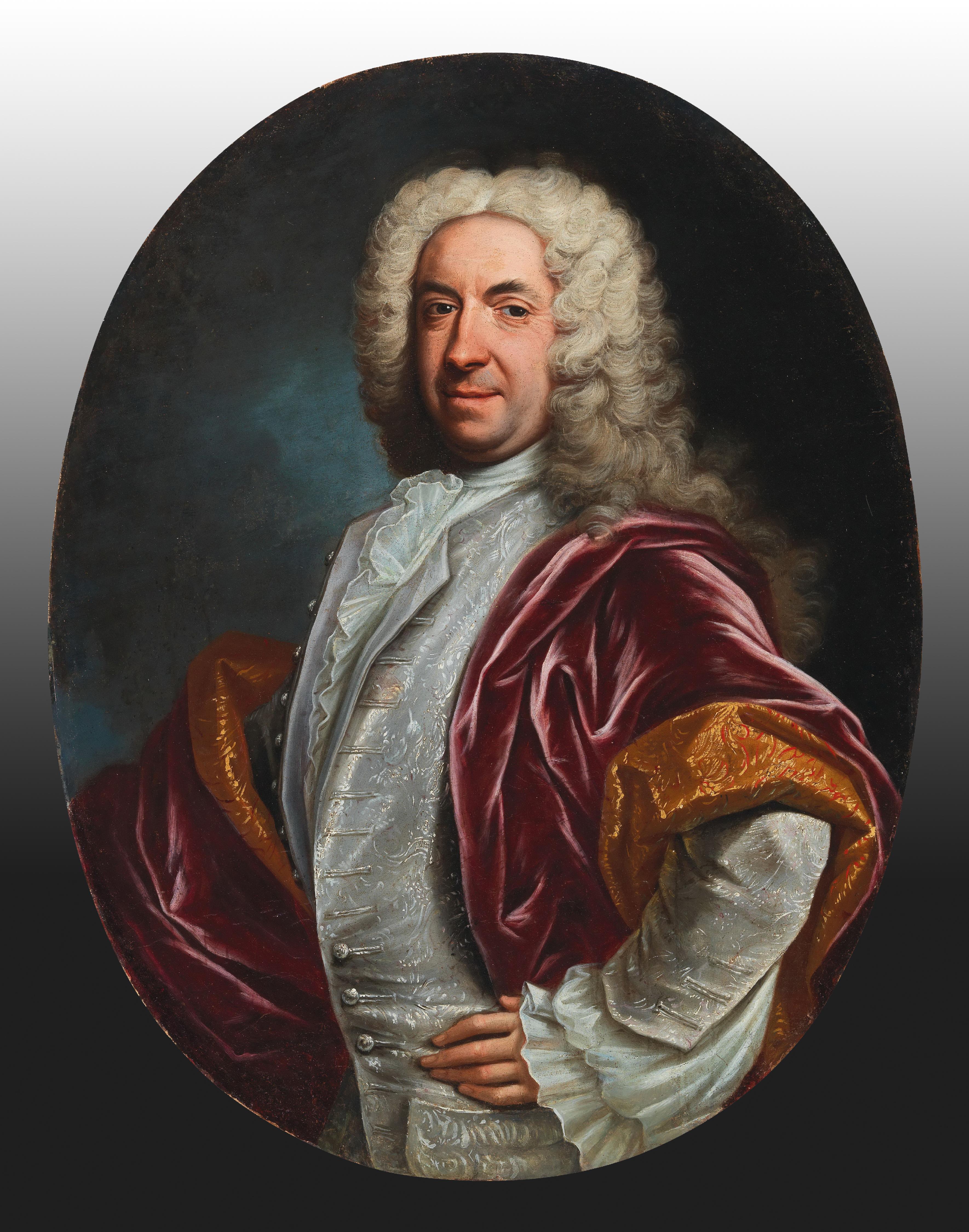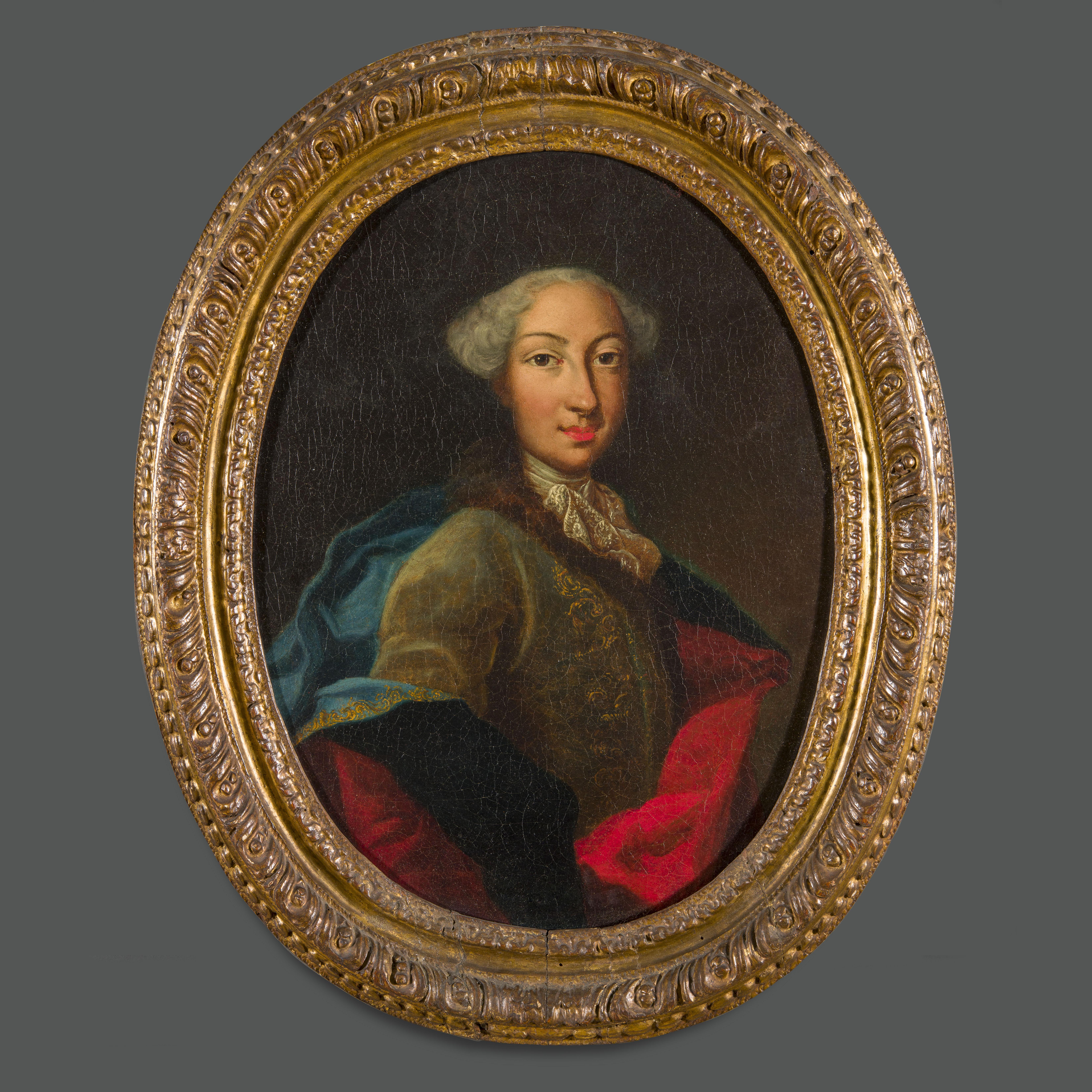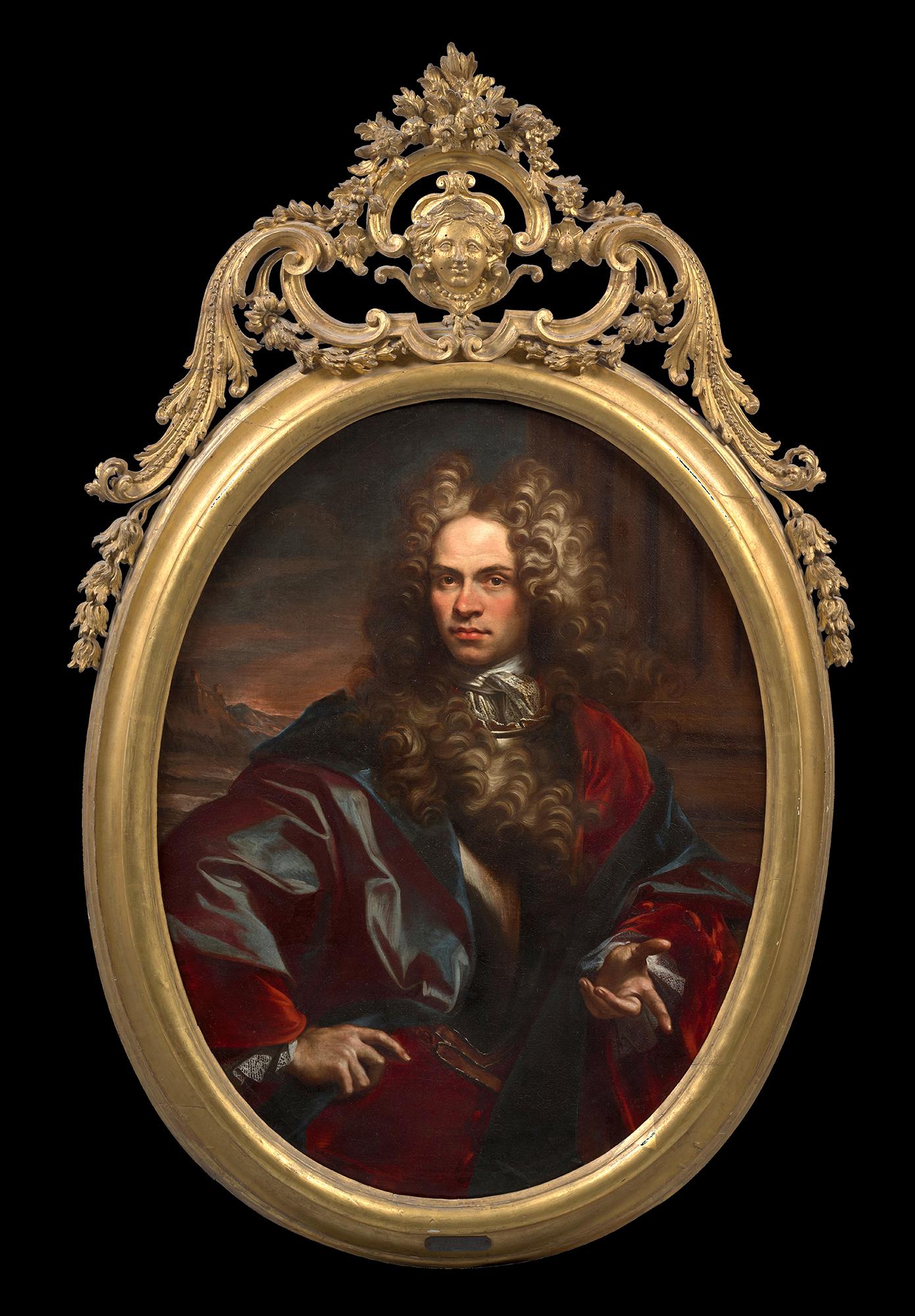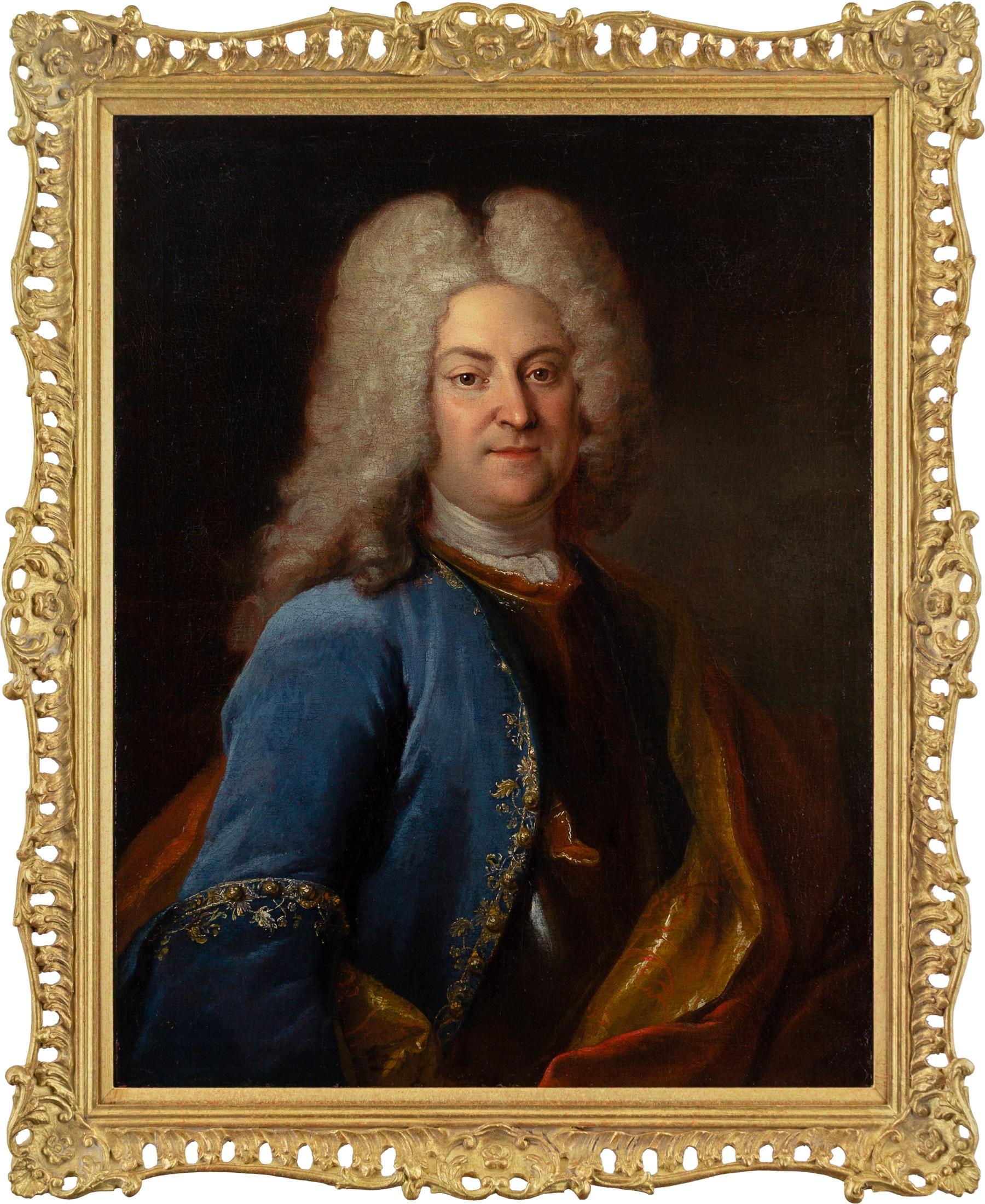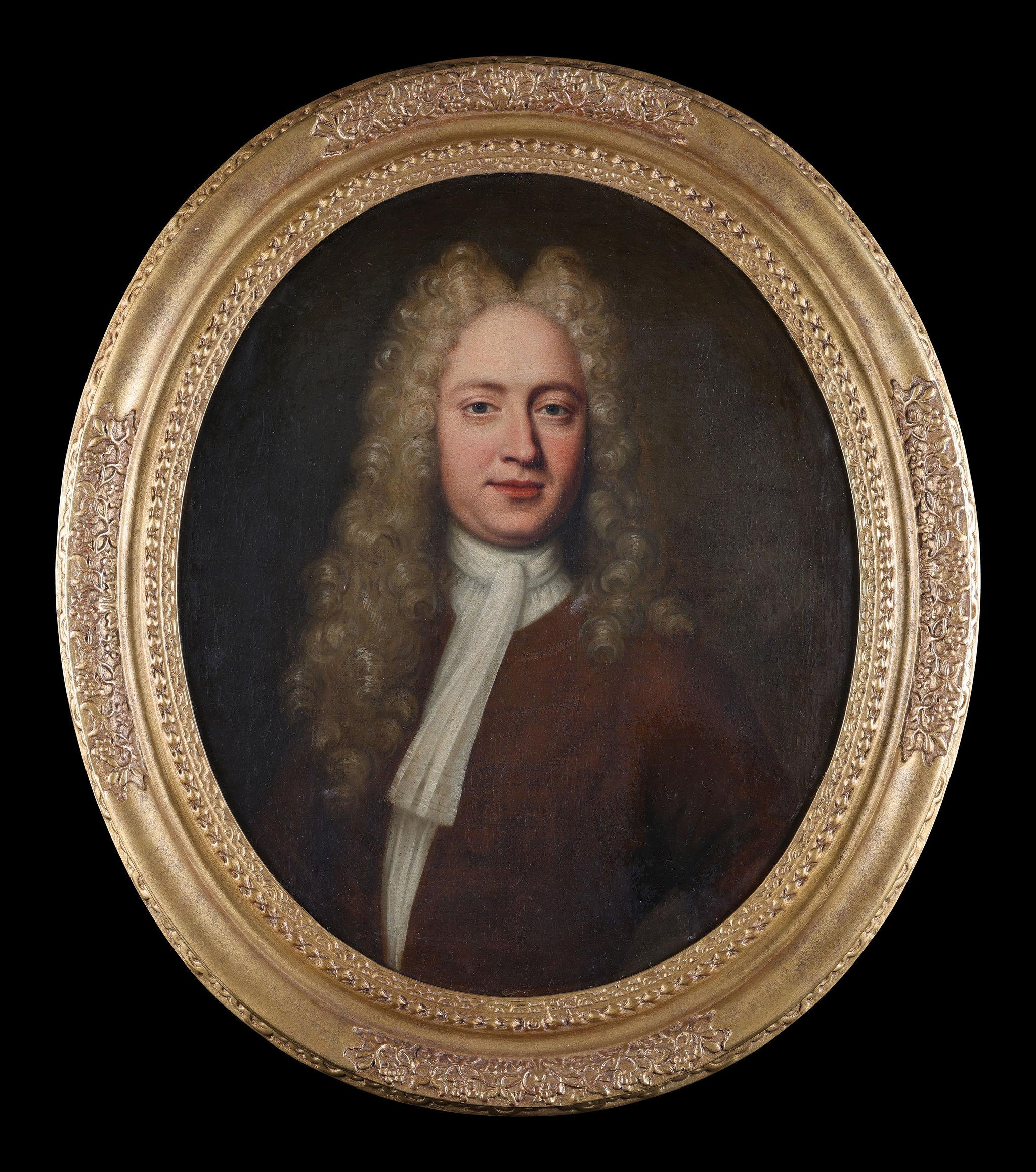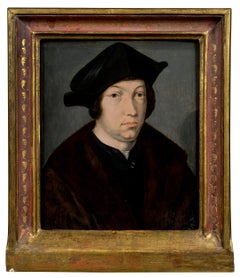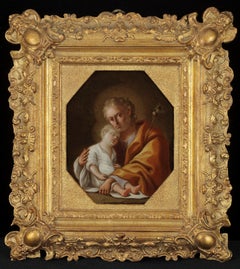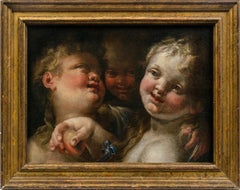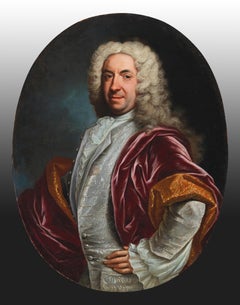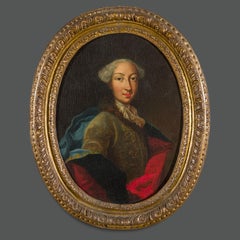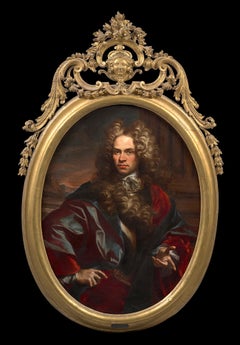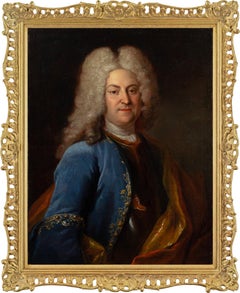Items Similar to Portrait of a Bewigged Gentleman
Want more images or videos?
Request additional images or videos from the seller
1 of 2
Vittore GhislandiPortrait of a Bewigged Gentleman1736
1736
$22,500
£17,168.11
€19,530.01
CA$31,597.28
A$34,579.43
CHF 18,272.19
MX$412,728.37
NOK 233,175.97
SEK 213,258.40
DKK 145,879.06
About the Item
Vittore Ghislandi, called Fra Galgario
Provenance:
Robert L. and Bertina Suida Manning, New York, ca. 1966-1996
Private Collection, USA
Exhibited:
“Eighteenth Century European Paintings from the Collection of Robert L. and Bertina Suida Manning,” The Gallery, Dept. of Art, Duke University, Durham, 1966, no. 19.
“Baroque Portraiture in Italy: Works from North American Collections,” John and Mable Ringling Museum of Art, Sarasota, 7 December 1984 - 3 February 1985; and Wadsworth Atheneum, Hartford, 20 March - 20 May 1985, no. 25.
Literature:
John T. Spike, Baroque Portraiture in Italy; Works from North American Collections, Sarasota, 1984, pp. 92-93, cat. no. 25.
Fra Galgario is the author of some of the most astonishing portraits of the late Baroque period. Full of character and remarkable for their expressive poses, these images, usually life-size, are both dramatic and sympathetic. The present work shows the artist working on an unusually small scale, with no loss of impact. The sitter, sporting a stylish wig and an a richly decorated doublet, gazes at the viewer with a frankness and intimacy that are perhaps lost in portraits of a larger format. The tilt of his head, the turn of his body, the placement of his arm akimbo – all are subtle indications of character that underscore the personality conveyed in the depiction of the subject’s features.
Recently, James Middleton has suggested that the subject of this portrait may be the celebrated Italian contralto castrato Francesco Bernardi, called Senesino (1686-1758). Senesino began his career in Venice, but is best known as the primo uomo in George Frederic Handel’s company, the Academy of Music, in London. There he created seventeen leading roles for Handel, including those in Giulio Cesare, Rodelinda, and Orlando. He returned to Italy in 1736.
Portraits of Senesino, such as Alexander van Haecken’s print after a portrait by Thomas Hudson (Fig. 1), show a man of great physical similarity to the sitter in our portrait, with a square brow, cleft chin, and wearing an almost identical costume and wig. Van Haecken’s print is dated 1735, presumably also the date of Hudson’s portrait and the year before Senesino’s return to Italy, where Fra Galgario would have painted him.
This work comes from the distinguished Suida-Manning Collection, begun by the Austrian art historian Wilhelm Suida and continued by his daughter Bertina Suida Manning and her husband Robert Manning, both scholars in the field. The attribution of the present work to Fra Galgario was first proposed by Robert Manning and seconded by John T. Spike. It has recently been confirmed by Dr. Mina Gregori upon first-hand inspection.
- Creator:Vittore Ghislandi (1655-1743, Italian)
- Creation Year:1736
- Dimensions:Height: 3 in (7.62 cm)Width: 2.375 in (6.04 cm)
- Medium:
- Movement & Style:
- Period:
- Condition:
- Gallery Location:New York, NY
- Reference Number:1stDibs: G12060510234
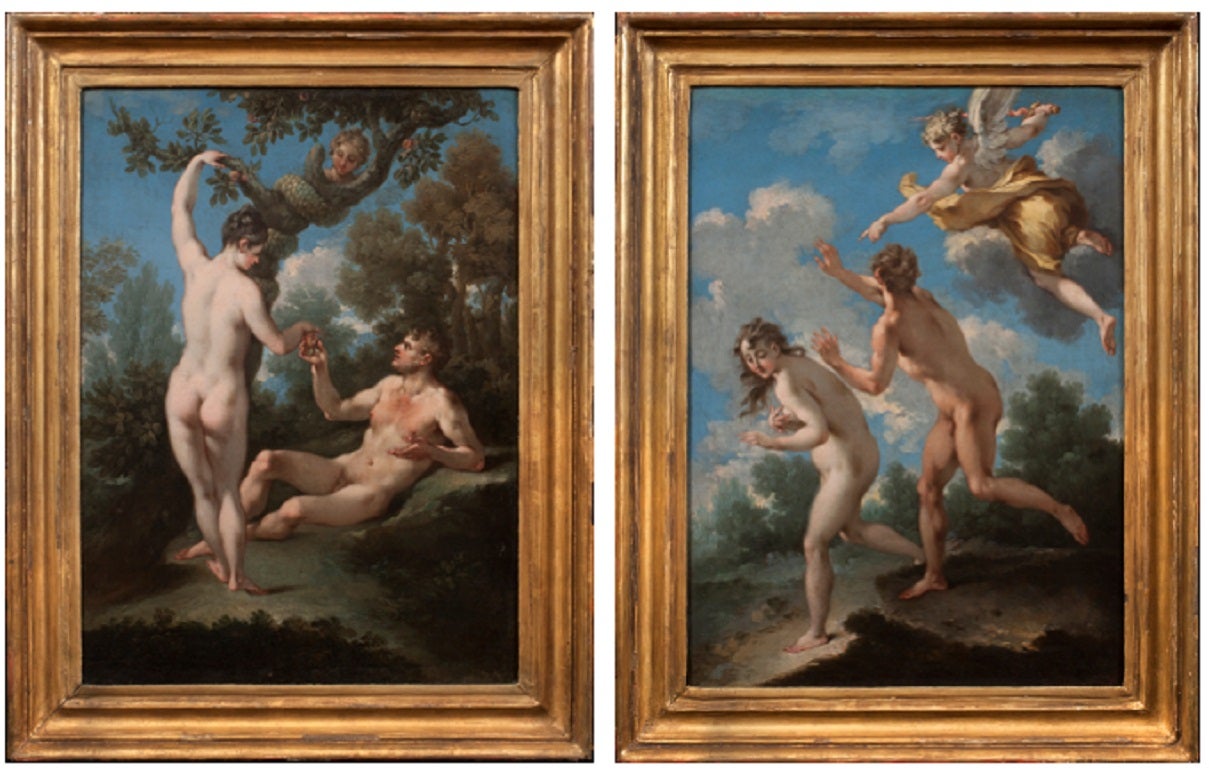
About the Seller
5.0
Recognized Seller
These prestigious sellers are industry leaders and represent the highest echelon for item quality and design.
Established in 1997
1stDibs seller since 2012
24 sales on 1stDibs
Typical response time: 7 hours
- ShippingRetrieving quote...Shipping from: New York, NY
- Return Policy
More From This Seller
View AllPortrait of a Man
Located in New York, NY
Provenance:
with Leo Blumenreich and Julius Böhler, Munich, 1924
Dr. Frederic Goldstein Oppenheimer (1881-1963), San Antonio, Texas; by whom given to:
Abraham M. Adler, New York, until 1985; thence by descent to the present owners
While old inscriptions on the verso of this panel propose its author to be Hans Holbein and the sitter Sir John More—a lawyer, judge, and the father of Sir Thomas More—this fine portrait has long been recognized to be by a Flemish hand. Max Friedländer gave the painting to Bernard van Orley (1487/1491 – 1541) in 1924, but did not include it in the volume dedicated to the artist in his Early Netherlandish Paintings...
Category
16th Century Old Masters Portrait Paintings
Materials
Oil, Panel
$52,500
Head of a Classical Poet (Socrates?)
By Pier Francesco Mola
Located in New York, NY
Provenance:
Possibly Antonio Amici Moretti, Rome, 1690
Roy Clyde Gardner, Union, Mississippi, 1970s until 2004; by whom given to:
Mississippi Band of Choctaw Indians, 2004-2010
Lit...
Category
17th Century Baroque Paintings
Materials
Canvas, Oil
Joseph Holding the Christ Child
By Pietro Bardellino
Located in New York, NY
Provenance: Private Collection, Argentina.
A work of great delicacy and intimacy, this small painting on copper by Pietro Bardellino treats a subject which grew in popularity during the Baroque period: Saint Joseph and the Christ child...
Category
18th Century Baroque Paintings
Materials
Copper
Three Angels
By Domenico Piola the Elder
Located in New York, NY
Provenance:
Robert L. and Bertina Suida Manning, New York, until 1996
Private Collection, USA
One of the leading artists in Genoa during the second half of the seventeenth century, Domenico Piola came from a successful family of artists, renowned for their many illusionistic ceiling programs throughout Genoese churches and palaces. A prolific draughtsman and painter, Domenico oversaw an extremely productive studio. In addition to his collaborations with numerous other artists, Domenico also provided many designs for book illustrations and prints that circulated throughout Europe, earning him international exposure and high acclaim in his own day.
As Dr. Anna Orlando has indicated (written communication), the present work is an early work by Piola, datable from the late 1640s. At this time the young artist came strongly under the influence of Castiglione and Valerio Castello, while admiring the works of Giulio Cesare Procaccini. Piola’s works from this period are exuberant and fluid, and the artist’s love of portraying children is evident from the angels and putti that populate both his altarpieces and more intimate paintings.
The present work depicts three angels...
Category
17th Century Baroque Figurative Paintings
Materials
Canvas, Oil
Portrait of Dr. Juan Ignacio Galves
Located in New York, NY
Signed and dated, along the bottom of the oval:
Dõr. Juan Ygnacio Galves nació el año de 1797. / Por J. Celestino Figueroa año de 1841.
Provenance: Luis Alberto Acuña (1904–1994), ...
Category
1840s Portrait Paintings
Materials
Canvas, Oil
Head of the Virgin
Located in New York, NY
Provenance: Private Collection, Paraguay.
This unpublished Head of the Virgin is a new addition to the rich corpus of paintings by Giovanni Battista Tiepolo. While the artist freque...
Category
18th Century Old Masters Figurative Paintings
Materials
Oil, Canvas
You May Also Like
Baroque Portrait of a gentleman 18th century Italian master by Domenico Parodi
By Domenico Parodi (Genoa, 1672 - 1742)
Located in Stockholm, SE
We are grateful to Prof. Daniele Sanguineti for suggesting the attribution to Domenico Parodi (1672 - 1742). He dates the painting into the period between 1730 and 1740. Domenico Par...
Category
1730s Realist Portrait Paintings
Materials
Canvas, Oil
18th Century Italian Portrait Credited to Maria Giovanna Battista Clementi
Located in Roma, IT
18th Century Italian Portrait Credited to Maria Giovanna Battista Clementi
The painting probably depicts a young nobleman of Savoy court ...
Category
Mid-18th Century Old Masters Portrait Paintings
Materials
Oil, Canvas
Italian men portrait
By Giovanni Maria delle Piane dit Mulinaretto (Genoa 1670 - Monticelli d´Ongina 1745)
Located in BELEYMAS, FR
Giovanni Maria DELLE PIANE, known as IL MULINARETTO
(Genoa, 1660 – Monticelli d'Ongina, 1745)
Portrait of a man
Oil on oval canvas
H. 108 cm; L. 83 cm
Provenance: Nino Ferrari Colle...
Category
1740s Italian School Portrait Paintings
Materials
Canvas, Oil
Early 18th-Century French Rococo Oil Painting, Portrait of a Baron
Located in Cheltenham, GB
This sumptuous early 18th-century portrait by leading French artist Louis de Silvestre (1675-1760) depicts Baron Pierre de Gaultier, a nobleman and diplomat active during the final y...
Category
Early 18th Century Rococo Portrait Paintings
Materials
Canvas, Oil
A Portrait of a Bewigged Gentleman
By Enoch Seeman
Located in St. Albans, GB
Enoch Seeman
Canvas Size: 30 x 25" (76 x 62cm)
Outside Frame Size: 37 x 32" (92 x 80cm)
1694-1744
He was born in Danzig, now Gdansk, Poland, around 1694. His father, also Enoch...
Category
Early 18th Century Old Masters Portrait Paintings
Materials
Oil
King Portrait Clementi Paint Oil on canvas Old master 18th Century Italian
Located in Riva del Garda, IT
Maria Giovanna Battista Clementi known as La Clementina (Turin, 1692 - Turin, 1761), Attributable to
Portrait of Victor Amadeus II of Savoy (Turin 1666 - Moncalieri 1732) king of Sardinia, duke of Savoy, marquis of Saluzzo and duke of Monferrato, prince of Piedmont and count of Aosta, Moriana and Nizza from 1675 to 1720.
Oil on oval canvas,
79 x 62 cm., Framed 98 x 82 cm.
The portrayed in this fascinating virile portrait is King Vittorio Amedeo II of Savoy, portrayed in ceremonial armor and red cloak according to the traditional courtly iconography, represented half-length, slightly three-quarter-length, with the towering "courtly" wig, according to the dictates of fashion of the first decades of the century, of French inspiration.
In order to represent the power embodied in our austere portrayal, the sovereign is immortalized with the symbolic attributes of the power of the family, identifiable in the ancient crown of the Kingdom of Sardinia, in the scepter with the Mauritian cross and in the necklace of the Supreme Order of the Most Holy Annunziata, established in 1364 by Amedeo VI, as the highest honor of the House of Savoy...
Category
18th Century Old Masters Paintings
Materials
Oil
$11,141 Sale Price
35% Off
More Ways To Browse
18th Century Portrait Of Gentleman
18th Century Portrait Of A Gentleman
18th Portrait Gentleman
Impressionist Oil Paintings Paris
Large English Landscape Oil Painting
Monochromatic Art
River Thames
Impressionist City
Rural Landscape Painting
Water Ripple
Desert Painting
Modern Original Oil Paintings
Oil Can
Oil Cans
Outsider Artist
Montmartre Paris
Pastoral Landscapes
19th Century Large French Oil Painting
